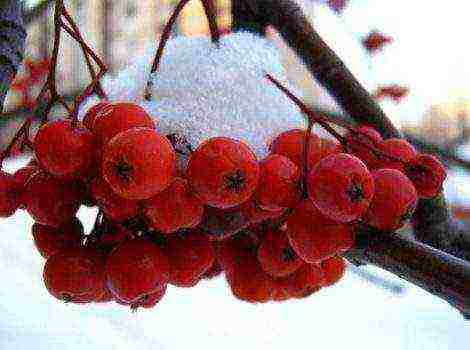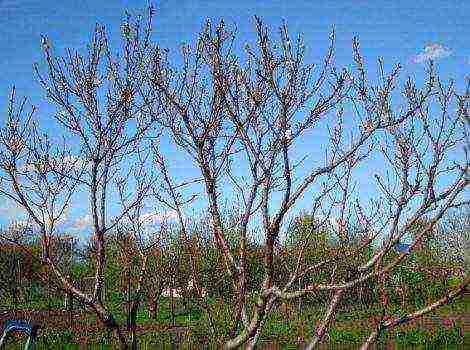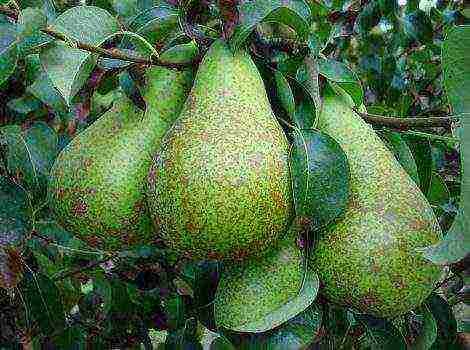Content
White, honey and other varieties of yellow plum
In Russian gardens, the yellow variety of plum is rarely found, and people far from plant growing are often mistaken for cherry plum. There is some truth in this delusion. Many varieties of yellow-fruited plums are, in fact, related to cherry plums.
They belong to the group of mirabelles, which are extremely popular in France. Some yellow varieties (with a greenish tinge) belong to the Renklode subspecies. Some come from the Chinese plum. In this article, we will consider a description of different varieties of plums: small and large. And also we will find out what the different species are called.
Common features of yellow plum species
Most often, plants of this group have round fruits. Rounded-oblong are less common. The main color is, of course, yellow, although some varieties may have a slight blush or green tint. The yellow plum variety tastes sweet, very juicy. Often small in size.
Regardless of the type, all yellow plums are united by a characteristic feature - self-sterility. Very rarely, among them, there are varieties with partial self-fertility. This is due to the fact that yellow-fruited plums are a product of selection; they are not found in wild forms. However, self-sterility has a downside: in the presence of a suitable pollinator, such plums are capable of producing a grand harvest.
Like blue plums, yellow plums differ in their early maturity. This characteristic determines which pollinator to choose. For early varieties, for example, the old Skorospelka early variety is suitable. Mid-season - July. Late - Moscow Hungarian.
Description of early ripe varieties of yellow plum
As a rule, yellow-fruited plums of early ripening can be removed at the end of July or in August. These are varieties of universal use. They are consumed fresh, processed into juices, jams and pastilles.
Early plum yellow ball
A small plum with an amazing taste that reminds someone of a pineapple, someone of a peach. The variety is also found under the name Golden Ball. It is easy to distinguish it from others: during the ripening period, the branches of the spreading tree are strewn with round yellow fruits, tightly sitting on short petioles, like sea buckthorn berries. This is not surprising, since the Yellow Ball belongs to the subspecies of the Chinese plum.
The Chinese plum is characterized by a very early and exuberant flowering. Each flower bud produces 3 or 4 flowers. The Yellow Ball differs from other plants in this group by its higher growth: the tree can reach 5 meters. However, the main parental traits are inherited by the variety:
- frost resistance (up to -50⁰С);
- early maturity (begins to bear fruit in the 3rd year);
- excellent keeping quality due to the dense skin;
- high portability;
- resistance to major stone fruit diseases;
- low drought resistance;
- tendency to podpevat of the root collar.
The yellow ball is a very fruitful variety. And since the weight of each fruit can reach 60 grams, increased attention is required from the gardener. It may be necessary in some years to thin out the fruit or set up supports to keep the branches from breaking.
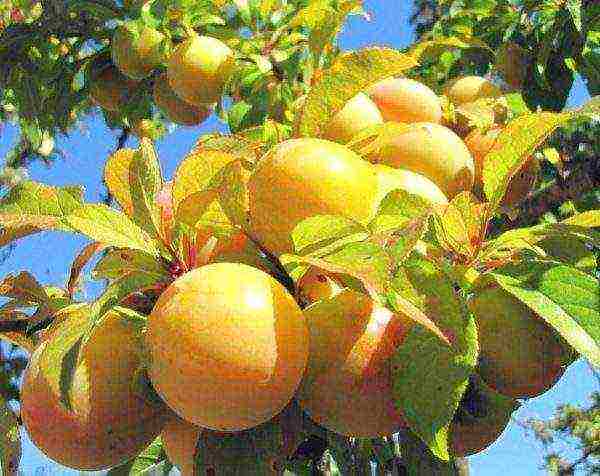
Small plum Altai jubilee
This variety also has a Chinese ancestor - the Manchurian prune plum. Thanks to this, the Altai Jubilee is able to withstand the harsh conditions of the Urals and Siberia.The color of its fruits is twofold: the main color is yellow, the integumentary color from the sunny side is red, with a protective waxy coating.
It is a medium-sized tree with a low stem and a back-pyramidal habit. The plum is small-fruited (only 14-16 grams each), but the taste of the fruit is very harmonious, with some sourness.
Altai anniversary self-sterile plum, but it can be safely planted next to other varieties, - she herself is an excellent pollinator. Its yield is high, although irregular. It begins to bear fruit in the 3rd year of life.

Round grade - Yantarnaya Mlievskaya
It is a thermophilic large-fruited variety bred by Ukrainian breeders at the Lev Platonovich Simirenko Institute of Pomology. According to some estimates, Yantarnaya is the best variety for making plum jam, because when overripe, the pectin content in fruits becomes very high.
The bright yellow fruits are oval in shape and can weigh up to 70 grams. The taste is very sweet, with a slight grape tinge. The pulp is juicy, with fibers, the stone separates well.
The peel on the fruit is thin, therefore, when fully ripe, they are poorly stored. However, Amber can be removed unripe - it lies in the refrigerator for a long time and is perfectly ripened.
The tree itself is medium-sized, with a compact crown, early-growing. Begins to bear fruit in the second year after planting. With a pollinator, up to 50 kg of fruit can be removed from one adult tree.
The winter hardiness of this variety is average. Regions with the harsh climate of Yantarnaya are not suitable. But in areas with mild winters, she does well. The main advantages of the variety: drought resistance and low susceptibility to stone fruit diseases.
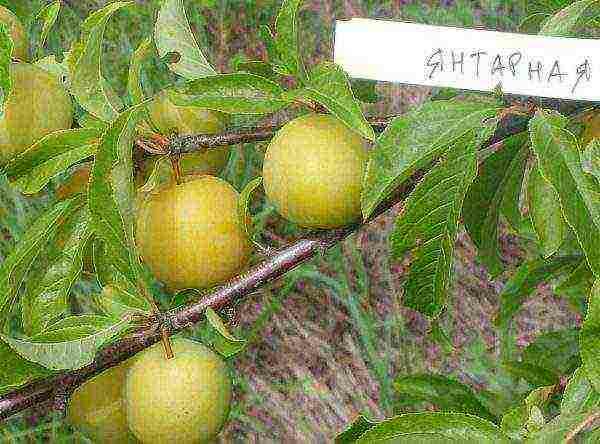
Honey
Honey white (aka Honey yellow) was bred by the Donetsk breeder L.I. Taranenko. The variety is also thermophilic, in Russia it is zoned in the Central Black Earth Region. However, the experience of gardeners shows that Honey, grafted onto a frost-resistant stock, bears fruit successfully and further north - in the Moscow region, Belarus, in the Kaliningrad region.
Plum Honey belongs to tall varieties. The tree can grow up to 6 meters. Fruits are oval, with a transparent yellow skin, waxy, reaching a weight of 50 grams. From the illuminated side, an orange integumentary color sometimes appears on them. The pulp is slightly greenish to intense yellow, depending on the degree of ripeness. Honey's taste is bright, sweet with a subtle sourness and honey aroma. The stone sits tightly, but in ripe fruits it separates well.
Additional advantages are drought resistance, good keeping quality and transportability of fruits. Medovaya tolerates frosts of the middle zone perfectly, flower buds do not freeze.
Of the relative, completely surmountable disadvantages, only self-sterility and high growth of the variety can be noted.

Mid-season varieties of yellow plum
The fruits of mid-ripening plums reach harvest maturity from late August to mid-September.
Ochakovskaya white
Just like Honey, this plum is sometimes called white or yellow, thanks to the waxy coating on the fruits. Ochakovskaya plum is easy to distinguish from others during flowering - by its large double flowers.
This is an old Russian variety, suitable for central Russia. The tree is medium-sized, up to 4 meters in height, with a tendency to thicken the crown, therefore it requires vigilant care for its formation.
Unfortunately, with the high quality of the fruit, this variety has many disadvantages:
- low ratio of the number of flower and vegetative buds (8: 100), which is why Ochakovskaya gives very modest yields;
- flower buds are poorly resistant to freezing;
- irregular fruiting;
- general low winter hardiness;
- the tendency of the fruit to crack and shedding.
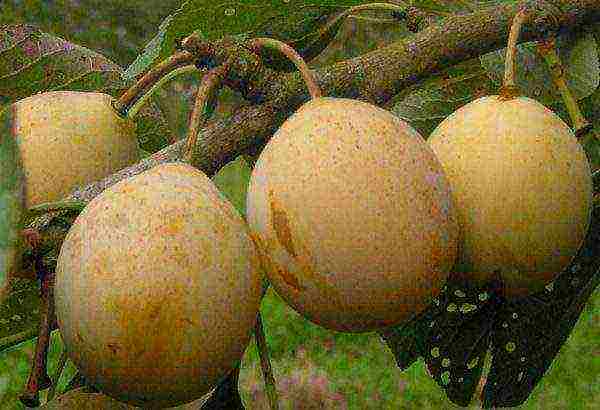
Compote
This variety of yellow plum was bred by the Russian breeder A. Velyaminov. Compote plum is remarkable in that it has not a tree-like, but a bush form. The bush grows high enough, up to 3 meters. The crown is spreading, the branches are raised.
Compote is a small-fruited variety. The fruits are round, with a dense bright yellow skin, weighing only 15 grams, reminiscent of cherry plum. The pulp is loose, juicy, sweet and sour taste. The name itself speaks of the purpose of the variety.
This small plant gives relatively good and stable yields: 15-20 kg of plums per bush. The advantages of the variety include its high frost resistance.
Late-ripening varieties of yellow plum
The ripening dates for the fruits of late-ripening plums are from mid-September to October.
Golden large
Heat-loving variety, Recommended by the State Register for the Lower Volga region. In severe frosts, shoots are damaged and one-two-year-old wood freezes.
Golden large differs from other yellow-fruited plums by partial self-fertility. The main advantage of the variety is large (more than 40 grams), excellent-tasting fruits, light yellow, with a slight blush, delicate edging and waxy bloom. They are able to ripen in the refrigerator and not lose quality in 1.5 months of storage.
The tree of this variety is medium-sized, with a pyramidal crown, begins to bear fruit in the 4th year. Yields are not record-breaking (about 30 kg per tree), but stable, without periodicity.
Other pluses of the Golden Coarse are high resistance to heat, drought and disease.
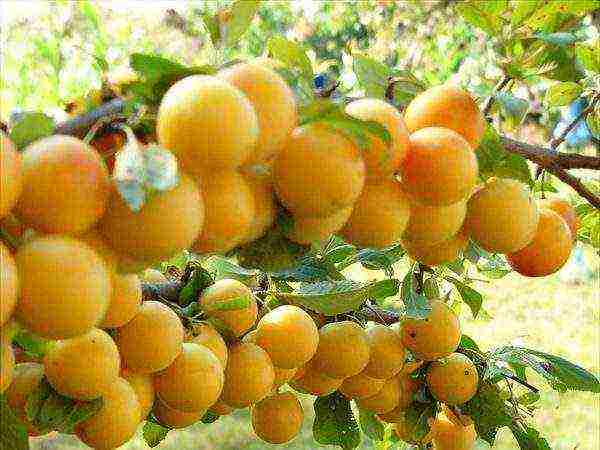
Yellow afasca
A very promising Bulgarian variety with exceptionally large fruits (60-70 grams). The fruits have an excellent dessert taste and an interesting color - yellow, with light greens. The yellow afasca is self-fertile, and the American plum Amers is best suited for pollination.
Another advantage of the Yellow Afasca is its early maturity. The variety can bring the first harvest already in the 2nd year. The plant is vigorous, with high winter hardiness and shark resistance. It is also susceptible to other diseases of stone fruits.
Among the disadvantages of the variety can be called the poor keeping quality of the fruits and their ability to quickly overripe on the tree. You only need to collect the Yellow Afasca manually.
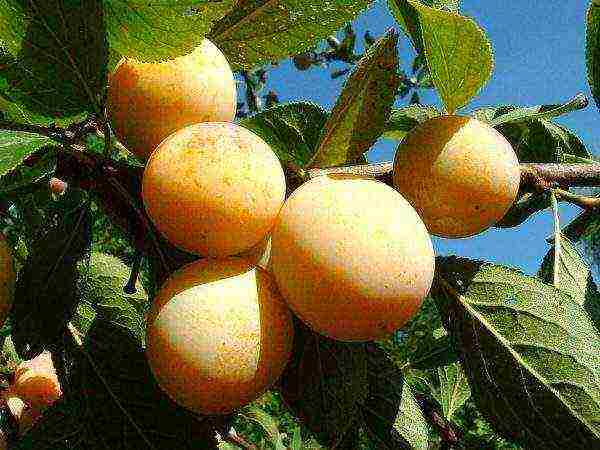
Egg yellow
A rare, ancient variety, first described in 1676. Like many old varieties of plum, it has many disadvantages, but may be of interest to collectors.
Egg yellow fruits are rather large, but have a mediocre taste and are sour. Purpose - for processing into compotes, marshmallows. The skin color is bright yellow, the stone is inseparable. Fresh fruits begin to deteriorate after a week of storage.
The plant itself is vigorous, with a round sparse crown. Resistant to frost and drought, however, it is affected by fungal diseases of stone fruits. Enters fruiting late - from 6-7 years of age. Productivity with proper care is up to 40 kg per tree.
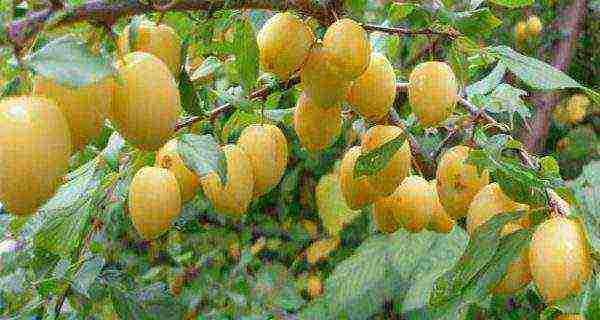
Yellow plum care
Caring for the yellow variety of plums is no different from caring for the blue. Some nuances depend on the specific variety, but the general rules are as follows:
- Regular watering. Plum loves water (but not stagnant water), and even drought-resistant varieties will react to a long absence of watering with a decrease in yield.
- Regular feeding according to the scheme: in the spring - nitrogen, in the summer - full complex fertilizer, in the fall - phosphorus and potassium.
- Regular pruning. Plum quickly grows and "runs" upward, and it needs to be formed.
- The correct selection of pollinators for self-infertile varieties.
- If necessary, yield regulation (fruit thinning).
- Mandatory water charging for the winter (after leaf fall, before frost).
With proper care, yellow plums will provide the gardener with wonderful fruits and good mood for 15-20 years.
